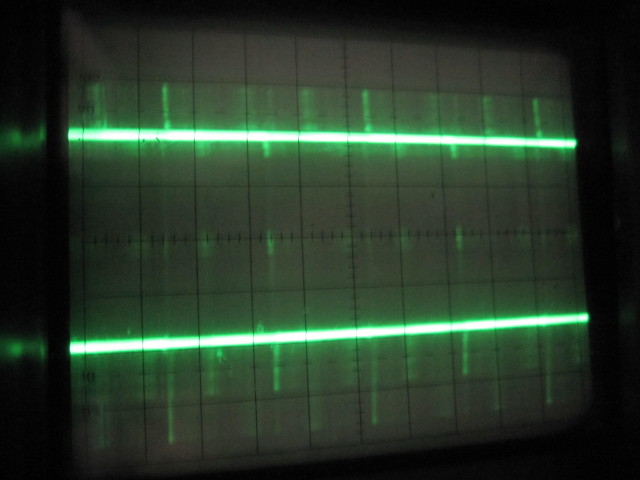For those with dual trace oscilloscopes (analog)...
Now I'm not sure how digital scopes work for using dual traces as since they tend to have more than one ADC they could dedicate one per channel for sampling two signals and implicitly are "chop" mode, but for analog scopes there needs to be a stable, high speed switch and oscillator to view two signals at the same time, chopping the signal.
However I was looking at my "old" "cheap" Vu-Data in chop mode and both inputs are set to GND and the time/div knob set to 1µS/div:

(alt mode is clean as expected, no chopping noise of course).
I don't see this on my Tektronix scope (my Tek is 30 years old, my Vu-Data is 35 or so years old so both are relatively the same age). I wonder if this is to be expected in "cheap" scopes or even cheap scopes should not do this?
"cheap" I have to say, because compared to the Tek, this is a "cheap" scope... Then again pretty much all the electrolytic caps in this "cheap" scope are tantalum, save for a very small handful.
Now I'm not sure how digital scopes work for using dual traces as since they tend to have more than one ADC they could dedicate one per channel for sampling two signals and implicitly are "chop" mode, but for analog scopes there needs to be a stable, high speed switch and oscillator to view two signals at the same time, chopping the signal.
However I was looking at my "old" "cheap" Vu-Data in chop mode and both inputs are set to GND and the time/div knob set to 1µS/div:
(alt mode is clean as expected, no chopping noise of course).
I don't see this on my Tektronix scope (my Tek is 30 years old, my Vu-Data is 35 or so years old so both are relatively the same age). I wonder if this is to be expected in "cheap" scopes or even cheap scopes should not do this?
"cheap" I have to say, because compared to the Tek, this is a "cheap" scope... Then again pretty much all the electrolytic caps in this "cheap" scope are tantalum, save for a very small handful.
Comment